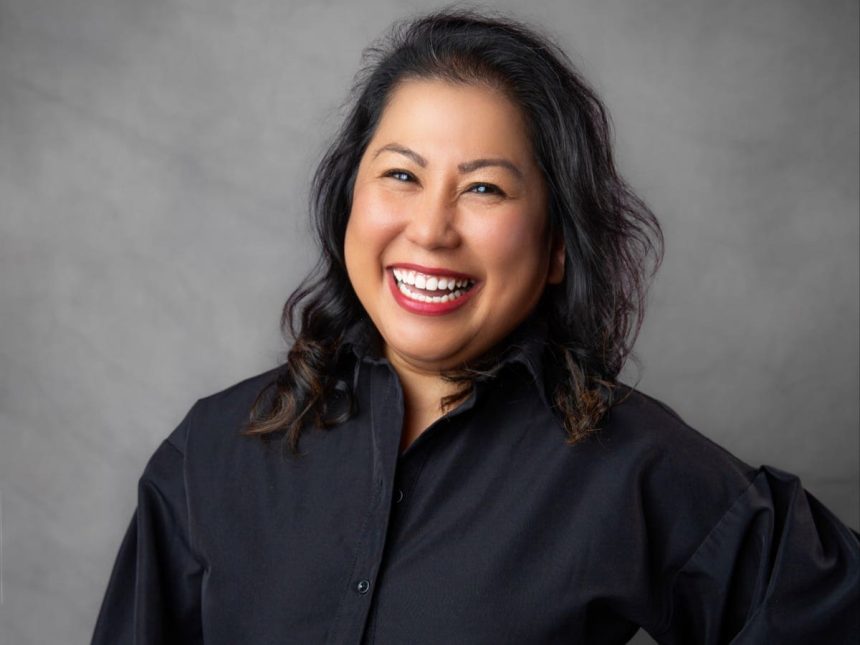The misalignment and expectations of Black, Indigenous and Women of Color leaders come at a significant cost to organizations – and our economy. In a conversation with Mỹ Tâm H. Nguyễn a management consultant and coach to high profile executive women, we discussed five ways in which tradition models of leadership have failed women of color leaders and the shifts we can make to address them.
First of all, how did we arrive at $172 billion?
The cost of attrition attributed to racial inequity over a five year period is $172 billion, according to SHRM. It is what is lost in hiring and re-hiring employees, who leave after relatively short tenures due to deeply ingrained and systemic discrimination, microaggressions, lack of career advancement and often, hostile work environments. It represents employees of color who cycle through low wage jobs due to a lack of health benefits, sick leave, paid family and medical leave and other safety nets.
A not insignificant portion of that figure is the loss of leaders of color, in particular women of color. Like those of Audie Cornish, Lulu Garcia-Navarro and Noel King from NPR, Bozama Saint John, who departed Netlfix after just two years to “live out loud”, and countless DEI executives with similarly short tenures.
When women of color (WoC) leaders leave organizations, they take with them drive, innovation and perspectives that support an increasingly diverse workforce. How we think about leadership has to shift, to support women of color leaders thrive.
Moving away from leadership values that reward directness, enthusiasm, self-promotion, and formality – towards ones that the cultures WoC leaders grow up in center – humility, community, and reciprocity.
In conversations with Mỹ Tâm (pronounced mee tahm), we reflected on the ways in which traditional models of leadership fail women of color and how companies can take action today to retain their most driven leaders.
1. Recognize quiet competence.
Quiet competence is a newly minted term for leaders who don’t self-promote but expect their managers to see how their work speaks for itself. Nguyễn says that, “in many non-white cultures, it is an embarrassment to gloat, and being boastful can be seen as dishonorable”. However, the modern workplace and mainstream leadership expectations reward and promote showmanship.
Companies’ penchant for promoting the wrong people is deeply ingrained, despite management theorists’ admonitions. By default, many of those dishing out promotions are themselves narcissists who advanced by wowing their superiors. And showy sorts’ shameless self-aggrandizement fulfill a convenient function for bosses, giving them a shortcut—no matter how misleading—to finding candidates for elevation. Many managers are too busy to patiently unearth genuine talent. After all, they have other important things on their plates—like impressing their own bosses (Economist).
Data shows that the most charismatic leaders are not ones that drive culture change.
How to take action: Nguyễn advises people managers to pay more profound attention to the quiet workhorses on their team. To find leaders worthy of promotion, pay attention to what they’re doing behind the scenes and how they work rather than what they’re saying and pitching about what they’re doing.
2. Beware of the double-edge sword of stereotypes.
Unconscious bias trainings have done little to root out workplace stereotypes.
For Asian women, the stereotype of docility has deep implications for how disproportionately they’re represented in junior and middle management roles and underrepresented at the most senior leadership positions.
For Black women, the expectation of assertiveness is often countered by the reception of how they lead. According to Stephanie McLemore Bray, founder of Touchstone Leadership Group, when Black women bring their authentic selves and their lived experience as Black leaders to meet the mainstream expectations of assertiveness, they can be seen as the threatening, angry Black woman: “We must navigate this tension for ourselves that these expectations are creating. If we don’t speak up, if we’re not assertive, we’re deficient in something that is valued in non-BIPOC leaders. When we do speak up, we are seen as aggressive and angry. It’s a double-edged sword and a terrible thing to navigate.”
To counter these implicit biases, Nguyễn says, “having collective awareness as leaders and providing a variety of leadership models are necessary ingredients to evolve are warped expectations of WoC leaders rooted in unproven stereotypes”.
How to take action: Provide multiple visible successful models of leadership at your organization. Bring in speakers and consultants who exemplify and represent a broader scope of leadership than what is currently existing at your organization. In short, representative diversity matters – especially at the top.
3. Expand the definition of leadership at work.
As immigrants, both Mỹ Tâm and I are aware of how expectations of leadership qualities like directness can counter what we were taught growing up.
Reflecting on her journey, she says, “as immigrants, assimilation is often an essential survival mechanism. In our former home countries, being direct, speaking up, and voicing our opinions can mean torture or death in a fragile political environment”.
In the world of work in the United States, our cultural norms can pigeon hole has “doers” and not leaders. WoC are often seen as helpers, not those that can hold a larger vision of strategy.
In her books Entitled and Down Girl, professor Kate Manne writes about “leaning down,” a phenomenon in which a marginalized group, say white women, feels entitled to ride on the shoulders of another more marginalized group, women of color.
How to take action: Share your power. Allow environments for different styles of leading to shine. Provide templates and opportunities for experimenting with different leadership models. Have space and opportunity for your team members to work through what their own models of leadership can look like; this can look like having them facilitate or lead a conversation or project according to their frameworks.
4. Align expectations with cultural competence.
Expectation misalignment comes at a cost to the organization and the individual.
Nguyễn has been in interviews where women of color candidates are quantitatively qualified (often overqualified) and not hired or promoted because they are not seen as direct or aggressive enough. She says, “these candidates don’t fulfill the culture test or cultural “accent” from the hiring manager of what assertiveness looks like”.
In many instances “quietly powerful” women of color value getting the job done, building a profitable business, and successfully selling the company – without fanfare. For too many hiring managers directness, taking up space, and owning the room are proxy for assertiveness, which is a proxy for competence.
She further notes that in organizations with a singular view of leadership, “hiring managers then hire the loud, assertive, aggressive, bulldog personality, who ends up as a short-timer at the company, and the firm has to do another round of interviews in a few months. For the individual, they don’t get hired because they don’t match the cultural “accent” of the hiring manager and have a more challenging time on the job hunt”.
How to take action: Nguyễn encourages hiring managers provide more situational questions where candidates can give verbal and written examples of the qualities they looking for, and for direct reports, the advice is straightforward, “deepen your relationship and provide quarterly evaluations for feedback on management style and how they see the progression of their work”.
5. Shift internal culture.
Reframe promotions and the performance review. Having one standard performance review template to measure a wide range of diverse styles of leadership and using these as means to promotion can be a big challenge both for leaders to rise through the ranks and stay in leadership positions. Some key points Nguyễn wants us to consider in reframing promotions and performance reviews:
- What are the projects or problems they’re managing? She has seen many leaders set up to fail, WoC leaders are often deemed more resilient and handed failing projects or organizations to resuscitate. They inherit the failed projects of others and are asked to fix them.
- Who reports to them? Who do they report to? What is their expectation of what a manager looks like? Another route she has seen leaders set up to fail is to lead an entire team of staff who don’t look like them or have similar lived experiences with different expectations of what a manager looks like. The cultural competence of critical decision-makers at the top need to understand different forms of leadership and how they can show up at work and how it impacts how they lead.
- What gets measured? How are OKR’s quantified? How is impact calculated? Make sure that things like coaching team members, collaborative models, and the measurements of impact includes a wide range of leadership values.
How to take action: To set your team up for success, reconsider how performance reviews and promotions are calculated and understand the cultural nuances of leadership.
Start with Nguyễn’s personal leadership evaluation below and go through the above recommendations; you’ll build more resilient teams and leaders on the way.
Three questions to ask yourself to reflect on your “accent” of leadership.
- How do you define leadership?
- What were your models of leadership growing up?
- How do the definition and models of leadership you’ve witnessed impact how you lead?
- What are your expectations of your direct reports? Are they named or remain unnamed?
Shifting cultural norms takes time.
As you reflect on your leadership, we have a number of women of color whose leadership you can feel inspired by – the ones quietly leading Fortune 500 companies like Indra Nooyi, building game changing funds like Arlan Hamilton, and leading social impact organizations in our communities like Ai-jen Po.
Mỹ Tâm H. Nguyễn is the CEO of Làmdi, a management consulting and executive coaching studio. She is launching Tzeda, a giving platform, and co-founded Blokable. She advises the Share Fund, JustFund, UW Press, and Get Media Savvy. She is a graduate of Harvard University and the University of Washington.
Read the full article here










